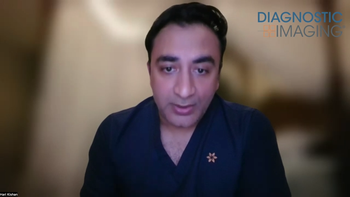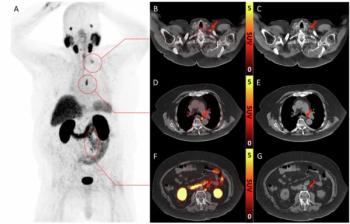
Imaging of Ballistic Injuries: Current and Emerging Insights
In a recent presentation at the American Roentgen Ray Society (ARRS) conference, researchers discussed pertinent considerations with imaging of gunshot wounds.
The 45,222 gun-related fatalities in 2020 were the highest on record in the United States, according to the Centers for Disease Control and Prevention (CDC).1 Research from the University of Pennsylvania estimated a yearly average of 120,232 gun-related injuries in the U.S. between 2009 and 2017.2 In light of these statistics, researchers discussed
In their online poster presentation, the researchers discussed types of bullets and resulting deformation patterns. Full metal jacket bullets create minimal deformation whereas the “mushrooms” at the tip of semi-jacketed bullets create larger surface area injuries with two different density projections on radiographs, according to the poster. With semi-jacketed bullets, the poster authors noted the copper jacket aspect of the bullet will present as a lower-density fragment and the lead core part of the bullet will show up as a high-density metal fragment.
Radically invasive projectile (RIP) bullets represent another challenge, according to the poster authors. Comprised of copper, these bullets have eight trocars that reportedly splinter off upon impact into separate wound channels.
“When interpreting imaging, one should use a mechanistic approach to establish bullet trajectory followed by assessment for injuries along the established path. Retained bullet fragments should be considered MRI conditional, and with the appropriate preceding workup, patients may be safely imaged,” noted poster co-author Jaykumar Nair, MD, who is affiliated with the Division of Emergency, Trauma and Acute Care Radiology at St. Michael's Hospital and the University of Toronto in Ontario, Canada.
Bullet yaw, fragmentation, and deflection as well as patient motion around the bullet can all influence bullet trajectory pathways, according to the poster authors. While one should not infer bullet trajectory based on surface wounds, the researchers said debris trails may be helpful in determining bullet trajectory.
Nair and colleagues also explained that retained debris from bullets does not automatically rule out the use of magnetic resonance imaging (MRI). Noting that semi-jacketed bullets are usually comprised of a lead core with a copper jacket, the study authors said injuries involving a deformed semi-jacketed bullet and retained ballistic debris with a debris trail are likely safe for MRI. Injuries involving undeformed full metal jacket bullets are another story, according to the poster authors.
“(Undeformed) full metal jacket bullets … should be imaged with caution as sometimes the jacket material in these bullets contain ferromagnetic materials,” wrote Dr. Nair and colleagues.
References
1. Gramlich J. What the data says about gun deaths in the U.S. Pew Research Center. Available at:
2. Kaufman EJ, Wiebe DJ, Xiong RA, Morrison CN, Seamon MJ, Delgado MK. Epidemiologic trends in fatal and nonfatal firearm injuries in the U.S., 2009-2017. JAMA Intern Med. 2021;181(2):237-244.
Newsletter
Stay at the forefront of radiology with the Diagnostic Imaging newsletter, delivering the latest news, clinical insights, and imaging advancements for today’s radiologists.






























